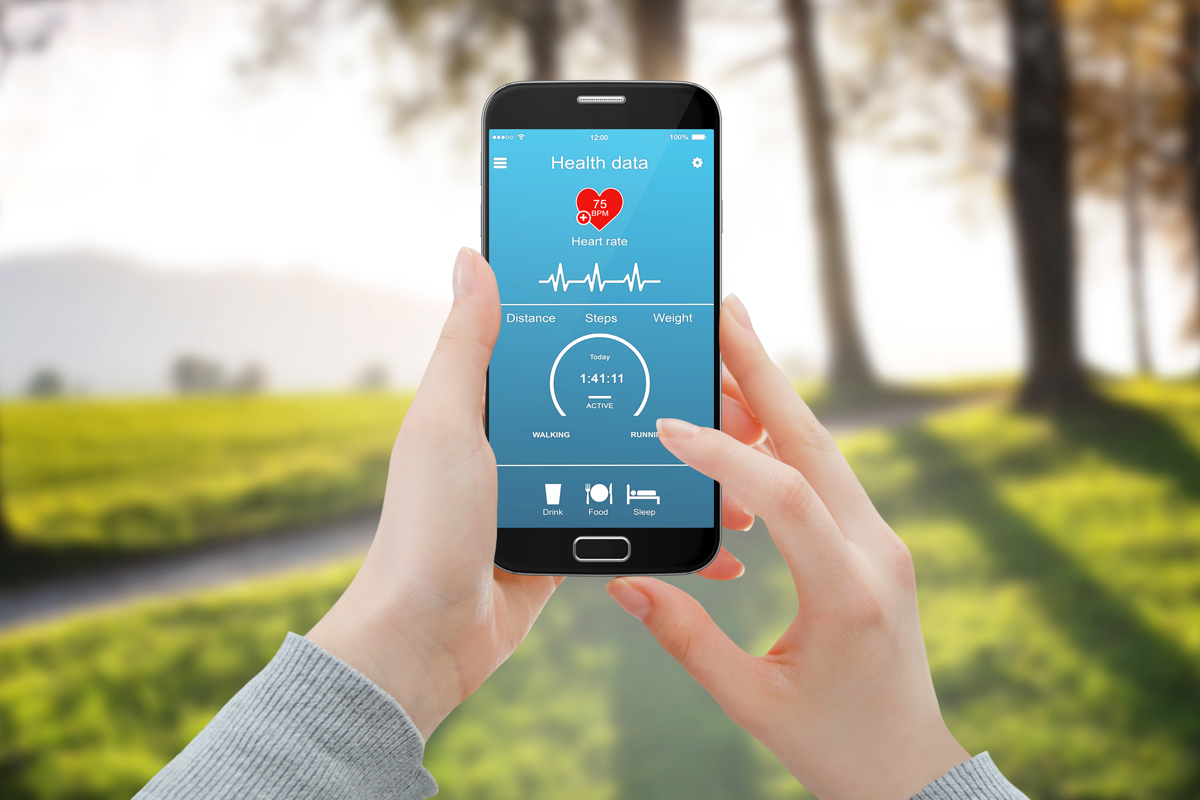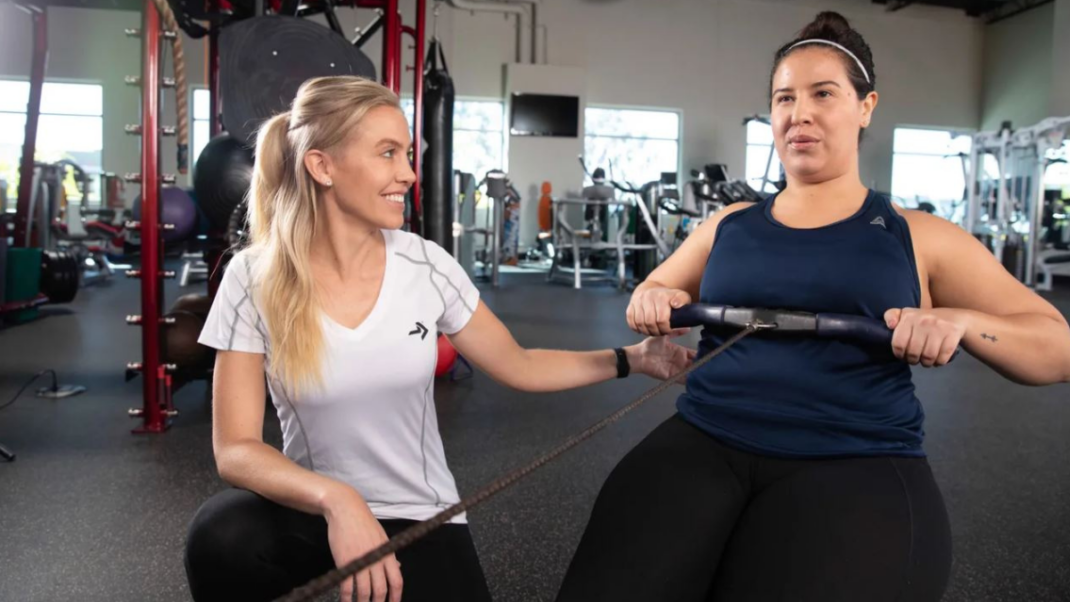The Mobile Health Map: Exploring Telehealth
Why telehealth will inspire your clients—and your business—to transform.

Telehealth is a huge win for nutrition experts and other wellness professionals. Embracing this ecosystem of wireless devices, digital platforms and mobile apps can give you a competitive edge with clients, who increasingly receive care via telehealth tools.
It’s also a big win for your clients because it can play a pivotal role in behavior change. Indeed, early studies show promising evidence that mobile and digital technologies can help people lose weight (Johnson et al. 2018). And with 6 in 10 American adults living with chronic diseases like diabetes, hypertension and cardiovascular disease (CDC 2018), there’s a broad incentive for everybody to give telehealth a try.
As more people get used to the idea of getting medical care via their phones and home computers, fitness and wellness pros are looking at a massive opportunity. Imagine how many more lives we can change outside the walls of offices, gyms and studios. This is what all our education has been preparing us for.
Let’s take a look at why telehealth is becoming more important—and how you can tap into its growing value.
Telehealth and Behavior Change
There’s no denying the appeal of telehealth for consumers and wellness professionals. As a consumer, I may want to connect with my care team, get feedback on my progress and track my goals. As a professional, I want ways to monitor clients remotely, increase engagement and improve outcomes. These parallel incentives are driving demand to measure and track physiological responses.
Of course, there are limits to showing progress in the palm of your hand. It looks cool, but does it really help? Yes, but to truly enable behavior change via telehealth, we need personalized interaction. The good news is we can deliver that interaction remotely. What’s more, it can generate authentic health changes.
A study published in Telemedicine and e-Health found that delivering health coaching for weight via telehealth can be more effective than in-person meetings (Johnson et al. 2018). Why? “Telehealth technology can enhance behavior change through greater client/patient self-monitoring, which has been cited as an important strategy for weight loss and weight-loss maintenance,” said Kelly Johnson, PhD, one of the study’s co-authors and an assistant professor in the Department of Kinesiology at Coastal Carolina University in Conway, South Carolina. Another study produced similar results using telehealth in a 12-week, all-virtual weight loss intervention (Alencar et al. 2017). Thus, telehealth technologies provide a powerful, cost-efficient channel to deliver personalized results.
ACTION STEPS
- Start small with mobile applications that allow you to add clients as “friends.” Many apps that offer step counting, dietary tracking and messaging can be accessed for free.
- Want to deliver the works? Look into a HIPAA-compliant telehealth platform with video, device integration and messaging.
- Don’t forget to practice your virtual presence. Being good in person doesn’t always transfer well; you have to work on polishing your online skills.
- Pick one strategy and try it. The key is to follow up by using these tools regularly with your clients.
See also: Why Fit Tech Changes Everything
Making the Change to Virtual

Put yourself in a client’s shoes for a minute, and consider how disjointed health care has become. You get in your car and drive to your doctor’s office, get back in the car and drive to your dietitian, and then drive some more to sweat it out with your personal trainer. Plus, you need to tell each person what the other one said—exhausting!
The telehealth ecosystem helps people manage all these interactions. Yes, there’s a gap between what you can and can’t do in a virtual platform, but it’s narrowing. Providers can now coordinate care with other specialists (including wellness pros) to produce better outcomes and significantly lower costs (Weil 2018). Although, historically, our healthcare system has been designed to treat the sick, we are now seeing a swing to focus on preventive care. This shift puts wellness professionals at the forefront of defining outcome-based care.
While fitness applications may be hot now, the future for digital health longevity lies in telehealth with connected providers. This includes building an ecosystem that promotes cost-efficient devices, remote monitoring and virtual consultations (Caulfield & Donnelly 2013).
Jeremy McConnell, MD, a sleep and obesity medicine specialist in Bradenton, Florida, describes why telehealth appeals to him: “Having a trained and experienced virtual team allows me to delegate behavior and nutritional counseling, thereby extending my reach to a greater number of patients. It also enables me to use my time more effectively to focus on patients that, as the medical doctor, only I can address.”
This approach keeps the physician at the center of patient care while entrusting services to a trained virtual network of professionals. This holistic ecosystem makes logical and economic sense because it helps address healthcare costs.
A virtual-first approach “will become healthcare’s game-changer,” says Roy Schoenberg, MD, MPH, who leads one of the nation’s largest telehealth provider networks, “. . . in the same way Uber changed the way we commute and Amazon changed the way we buy” (Schoenberg 2018).
ACTION STEPS
- Don’t wait to get connected with a virtual team.
- Create a network in your area by contacting local professionals and creating an online group practice.
- Include a variety of professionals: physician, registered dietitian, exercise professional, behavior specialist, health coach, physical therapist, etc. Many in your area need wellness collaborators.
See also: Adding Apps, Wearables and Tracking Devices to Your Fitness Services
Making Telehealth a Paying Proposition
Virtual consultations have been happening for years—a text here, an email there. But what about getting paid for them? Well, your chances should improve in the next 2–5 years.
We’ve survived 10-plus years of “it won’t last,” “no one will use it” and the most important excuse: “Insurance will never pay for telehealth services.” All that is changing, which means we’re entering one of the most exciting times for wellness, fitness and health professionals in the telehealth space.
Marcia Cox, a certified corporate wellness specialist and certified medical billing specialist for inHealth Medical Services, explains what it takes to cash in on telehealth: “There are two ways to get paid for your telehealth services: cash or reimbursed by an insurance payer. Cash is cash. There are, however, over $8 billion spent for insurance premiums. For me, I want to use all of my benefits, and preventive services are a big part of most insurance plans these days.“
Advancements in outcome-based care are driving the need for wellness professionals, whose services may be reimbursable by insurance with the right care team. Because healthy eating and regular physical activity have such a profound impact on heart disease, cancer and obesity progression, insurance companies are making great strides in adding wellness reimbursements.
Trying to penetrate the insurance world can feel like climbing the Mount Everest of payment models, but the effort can be worthwhile.
ACTION STEPS
- Make sure you understand your target customer and industry. If your clients include people with chronic conditions or emerging ones (diabetes, cardiovascular disease, hypertension, etc.), it may be worth thinking out of the brick-and-mortar box.
- Decide how you fit in, and excel at it. Improve your current skills or add new ones: fitness programming, health coaching, virtual classes and more.
- Communicate. Once you identify your network, stay in constant (HIPAA-compliant) communication with your contacts. Once you see the synergy at work, you will wonder why you didn’t start sooner.
- Get paid. Find the right billing strategy for your clientele (cash or insurance).
See also: Making Money With Online Training
Staying Ahead of the Curve on Emerging Trends

Most people carry a smart device in their pocket or on their wrist to measure steps, calories, oxygen saturation, blood glucose and many more data points. Data acquisition spans the continuum from fitness to nutrition to medicine as we move toward integrating telehealth technology with, well, everything. We’ll all need to adapt to this new data-driven era. “You have to have a willingness to change,” said Tim Bainton, founder and managing director of business development for Blue Chip Sports Management, in an article for IHRSA 2018 (Schmaltz 2018).
Telehealth is expected to play a huge role in the future of fitness and wellness. According to a prediction by Forbes, 15% of global healthcare spending will be tied to value-based models that include telehealth by the end of 2019 (Das 2018). Thus, the healthcare spending paradigm is shifting to outcome-based care—finally! Wellness pros have been aching for this change. As more financial resources support preventive care and chronic-care management, experts in nutrition, fitness and holistic wellness will enjoy more opportunities.
Five years ago, a study in QJM noted that telehealth tools can help deliver comprehensive health management customized to match individual wellness needs. The article also challenged us “to re-imagine our health and social care models to meet the challenges of chronic disease” (Caulfield & Donnelly 2013). In 2018, telehealth advances across the health and wellness spectrum—legislators, payers, clinicians, nutritionists and fitness pros—put us on the path to meeting that challenge.
Moreover, the telehealth market is moving quickly. In a recent Health Affairs article, editor-in-chief Alan Weil paid particular attention to telehealth and pointed out significant areas of unrealized potential (Weil 2018).
Marcia Cox, a certified corporate wellness specialist and certified medical billing specialist for inHealth Medical Services, outlines some of the most prominent advances: “In 2018, there were over 160 telehealth bills presented to Congress for review. That’s more than any other time in history. We’ve also had a record number of telehealth bills passed, including but not limited to HR 1892 Bipartisan Budget Act, HR 3360 (CHRONIC Care Act), Telehealth Enactment Act of 2017, and Veterans in E-Health and Telemedicine Support Act of 2017” (Randolph & Udow-Phillips 2018; Congress.gov 2017; Wicklund 2018). As more legislators and payers get on board with telehealth, wellness pros will have to respond.
ACTION STEPS
- Get familiar with your state laws.
- For guidelines on your specialty, check your state laws via organizations like the American Telemedicine Association (americantelemed.org) or the Center for Connected Health Policy (cchpca.org).
Moving Ahead
Yes, telehealth is still a work in progress that is evolving with the healthcare industry. Of course, it poses a wealth of challenges, but it’s also an opportunity for wellness professionals to make a huge impact with cost- and time-efficient digital technologies.
References
Alencar, M.K., et al. 2017. The efficacy of a telemedicine-based weight loss program with video conference health coaching support. Journal of Telemedicine and Telecare, doi:10.1177/1357633X17745471.
Caulfield, B.M., & Donnelly. S.C. 2013. What is connected health and why will it change your practice? QJM, 106 (8), 703–7.
CDC (Centers for Disease Control and Prevention). 2018. Make 2019 the healthiest year yet! Accessed Dec. 19, 2018: cdc.gov/chronicdisease/index.htm.
Congress.gov. 2017. H.R. 3360—Telehealth Enactment Act Of 2017. Accessed Jan. 15, 2019: congress.gov/bill/115th-congress/house-bill/3360/text.
Das, R. 2018. Top 8 Healthcare Predictions for 2019. Forbes.com. Accessed Dec. 19, 2018: forbes.com/sites/reenitadas/2018/11/13/top-8-healthcare-predictions-for-2019/#76d68fd8700e.
Johnson, K.E., et al. 2018. Telemedicine-based health coaching is effective for inducing weight loss and improving metabolic markers. Telemedicine and e-Health, doi:10.1089/tmj.2018.0002.
Randolph, M., & Udow-Phillips, M. 2018. Health care policies in the Bipartisan Budget Act (H.R. 1892). Center for Healthcare Research & Transformation. Accessed Dec. 21, 2019: chrt.org/wp-content/uploads/2018/02/Bipartisan-Budget-Act-CHRONIC-Care-Fact-Sheet-.pdf.
Schmaltz, J. 2018. The importance of data collection for health clubs. IHRSA. Accessed Dec. 20, 2018: ihrsa.org/improve-your-club/the-importance-of-data-collection-for-health-clubs/.
Schoenberg, R. 2018. The state of telehealth: The emergence of a game-changer in healthcare. LinkedIn Pulse. Accessed Dec. 19, 2018: linkedin.com/pulse/state-telehealth-emergence-game-changer-healthcare-schoenberg-md-mph/.
Weil, A.R. 2018. Telehealth. Health Affairs, 37 (12).
Wicklund, E. 2018. Senate passes VETS Act, enhancing telehealth access for veterans. mHealth Intelligence. Accessed Jan. 15, 2019: mhealthintelligence.com/news/senate-passes-vets-act-enhancing-telehealth-access-for-veterans.
Michelle Alencar, PhD
Michelle Alencar, PhD, is an associate professor in kinesiology and also serves as co-founder and Chief Science Officer for inHealth Lifestyle Therapeutics, Inc. She is a certified clinical nutritionist, certified lifestyle therapeutics health coach, exercise physiologist and strength & conditioning specialist with a passion for mobile health and virtual lifestyle coaching. She has several research publications in the areas of health, mobile health, telemedicine and body composition.






